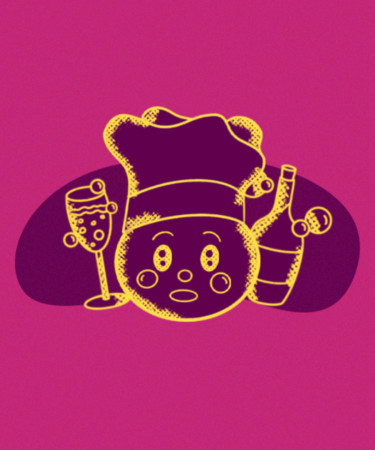Tim McKirdy is a senior staff writer for VinePair. Prior to writing about alcohol professionally, he studied at London’s Westminster Kingsway Culinary College and worked in multiple award-winning kitchens in the British capital and later Buenos Aires, Argentina. If you have any burning questions for VinePair’s resident chef, please reach out to [email protected].
With December upon us, restaurants around the country have entered their biggest month of the year. Filled with holiday outings for families, offices, and groups of friends, the month culminates in one of the busiest nights on the calendar: New Year’s Eve.
Those who have previously dined out on Dec. 31 will know that snagging a spot at a fine dining establishment usually requires a reservation made weeks or months in advance, and that pricey, prix-fixe tasting menus are typically in the cards. Opting for this type of menu over a la carte allows restaurants to carefully manage the flow of the evening and maintain quality while operating at capacity. It also allows the kitchen to pull out lavish ingredients, like truffles, caviar, foie gras, and, occasionally, Champagne.
Used in the traditional Champagne velouté sauce, the bready notes of autolysis, developed while the wine ages in contact with dead yeast cells, pair majestically with cream and fish or chicken stock. Rich and velvety, the sauce offers the ideal accompaniment to pan-fried fish fillets and light meats, and brings an added dose of luxury to any dish. Yet diners might be surprised to learn that, despite featuring on the menu, Champagne doesn’t always make it into the sauce.
All can agree that it’s poor form (to say the least) for restaurants to not deliver on the promise of their menus. But for the kitchen, it seldom makes sense to include Champagne in a sauce.
From hitting the pan to being emulsified into the other ingredients of the sauce, the sparkling wine quickly loses its fizz. So the sole reason for using Champagne during cooking is its flavor. In this respect, other wines often provide a better alternative.
Kitchens operate with very fine profit margins, making Champagne’s typically expensive cost hard to justify. If a chef seeks to include the distinct notes of brioche and fresh pastries, chances are there are higher-quality traditionally made sparkling wines available at the same price as the cheapest Champagne they can source. Should the chef instead simply wish to add the profile of a bright and acidic white wine that displays the influences of malolactic fermentation and oak, the options become broader still.
Of course, this is not to say that all restaurants serving “Champagne veloutés” opt for substitutions, but it happens — I’ve seen it! And it goes without saying that if you find yourself with leftover, fizzled out Champagne on Jan. 1, that wine should absolutely be used in the kitchen rather than poured down the drain.
